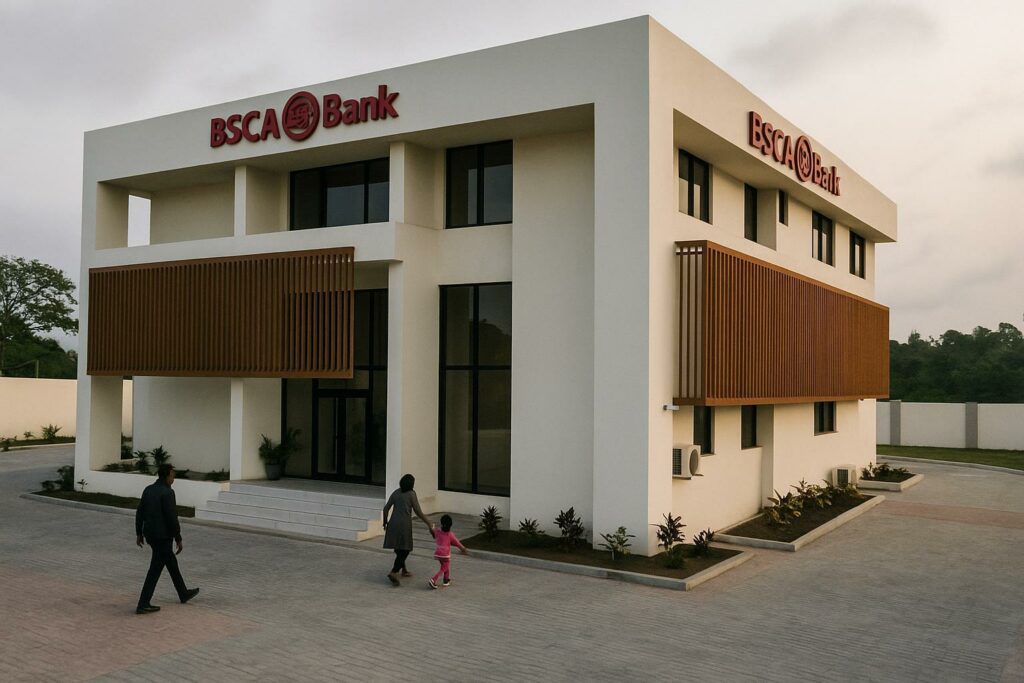A discreet decision with strategic overtones
On 12 December 2024, behind the marble façades of the Central African Banking Commission’s headquarters in Libreville, a short decision quietly reshuffled the regional industrial hierarchy. By inscribing Manufacture Bâtiments et Travaux Publics on the exclusive roster of “enterprises of grand standing and of national importance” for the 2025 fiscal year, COBAC placed a Congolese construction group alongside petroleum majors, telecom heavyweights and milling champions that collectively account for a sizeable share of gross domestic product in the six-nation CEMAC bloc (COBAC communiqué, 2024).
Congo’s lone BTP standard-bearer
Among the forty firms selected, eight are Congolese, yet only one operates in construction. MBTP therefore becomes the sector’s flag-bearer, a position laden with both symbolism and tangible incentives. Under CEMAC prudential rules, the “grand standing” label translates into facilitated access to credit lines, softer collateral requirements and higher risk ceilings for commercial banks, three levers deemed crucial in a capital-intensive industry where cashflow dictates the capacity to bid for multi-year infrastructure contracts (Banque des États de l’Afrique centrale annual note, 2023).
From Oyo’s skyline to regional recognition
The regulator’s nod caps a trajectory punctuated by projects that now serve as reference points. In May 2024 President Denis Sassou Nguesso inaugurated the new headquarters of the Sino-Congolese Bank for Africa in Oyo, a 480-square-metre glass cube set on a 3 000-square-metre plot executed by MBTP and financed within the framework of Beijing-Brazzaville cooperation. The ceremony, attended by BSCA Bank chair Gu Shu and Finance Minister Christian Yoka, offered visual proof that a home-grown contractor can meet the stringent specifications of a bank whose capital is half held by Agricultural Bank of China, the world’s sixth-largest lender by assets.
Bankable credibility and the cost of concrete
Under Congo’s climatic and logistical constraints, a cubic metre of reinforced concrete can verge on 145 000 CFA francs, twenty-five percent above the continental average, primarily because imported cement, diesel and steel remain dollar-denominated. Preferential banking terms therefore become more than a balance-sheet luxury; they condition the very feasibility of bridges, road interchanges or port extensions. “Infrastructure is never purely about steel and mortar; it is a passport to sustainable growth and a laboratory for local innovation,” explains Issa Attye, MBTP’s deputy managing director and head of Unicongo’s construction federation, recalling his remarks during the 2025 Rencontre des Entrepreneurs Francophones in Brazzaville.
A catalyst for Congo’s diversification strategy
With hydrocarbons still contributing roughly 45 percent of national revenue (Ministry of Economy, 2024), Brazzaville has reiterated its ambition to broaden the productive base through the National Development Plan 2022-2026. Reliable transport corridors, energy distribution networks and social facilities form the backbone of that vision. By elevating MBTP, COBAC sends what economist Audrey Okemba of Marien Ngouabi University describes as “a market signal that home-grown engineering can now aspire to anchor diversification”. The designation may also help crowd-in foreign direct investment: international lenders habitually benchmark counterpart risk against COBAC classifications.
Legal and prudential foundations of the ‘strategic’ label
COBAC Resolution N° R-2021/03 introduced a prudential carve-out enabling banks to allocate up to fifteen percent of tier-one capital to accredited companies, compared with ten percent for standard corporate exposure. That buffer, say legal analysts at the regional law firm Legacy & Compliance, effectively provides MBTP with a lower cost of capital while reinforcing the banking system’s oversight capacity through quarterly disclosure obligations. The supervisory architecture thus grants advantage without relinquishing transparency, an equilibrium praised by international ratings agencies in their latest outlook on the CEMAC financial sector (Moody’s regional review, 2024).
Scaling ambitions across CEMAC
MBTP’s order book already spans Gabonese social housing units and Cameroonian highway segments, but management is positioning for the 1 200-kilometre Pointe-Noire–Brazzaville–Ouesso multimodal corridor championed by the Economic Community of Central African States. The firm’s financial director, Stéphane Koumba, confirms that early-stage feasibility studies would require approximately 30 billion CFA francs in pre-financing, a figure “now within reach” thanks to the COBAC statute.
Sustainable engineering in practice
Echoing international best practice, MBTP has begun piloting low-carbon cement blends and apprenticeship schemes for welders and surveyors recruited in rural districts. The group reports that fifty-three percent of its site managers are now Congolese graduates—an accomplishment welcomed by the International Labour Organization in its 2024 country brief. “Our mandate is to build for tomorrow’s citizens, not yesterday’s indicators,” insists Attye, adding that environmental impact assessments are systematically integrated from design to commissioning.
Looking ahead: prudent optimism
If inclusion on the 2025 list confers prestige, it also imposes deliverables: audited financial statements within 120 days, compliance with regional anti-money-laundering norms and gender-balanced governance targets introduced last year. Market analysts note that failure to maintain these standards could prompt COBAC to withdraw the label, a reputational risk MBTP seems determined to avoid. For now, the confluence of regulatory confidence, presidential backing and operational track record places the company in a vantage point from which to shape Central Africa’s next generation of infrastructure.

